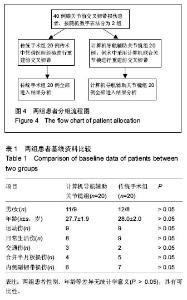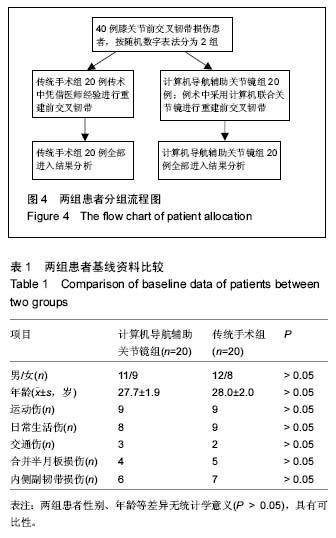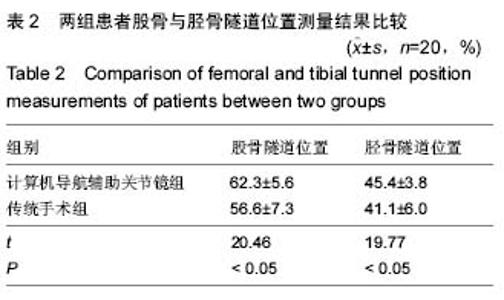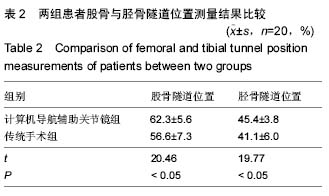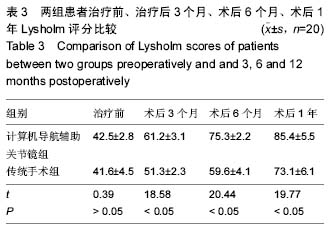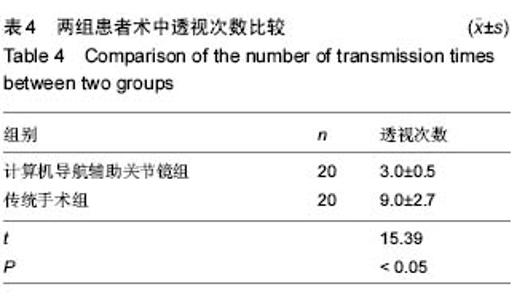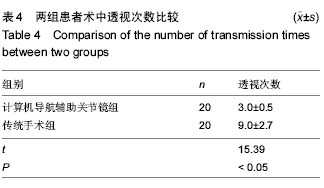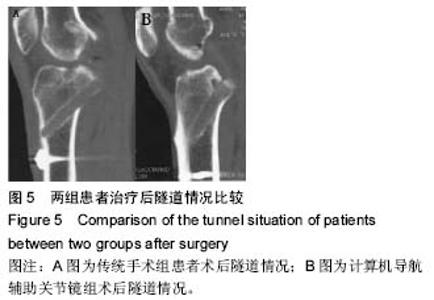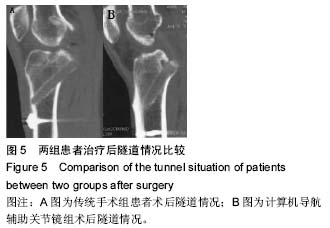| [1] |
Peng Zhihao, Feng Zongquan, Zou Yonggen, Niu Guoqing, Wu Feng.
Relationship of lower limb force line and the progression of lateral compartment arthritis after unicompartmental knee arthroplasty with mobile bearing
[J]. Chinese Journal of Tissue Engineering Research, 2021, 25(9): 1368-1374.
|
| [2] |
Huang Dengcheng, Wang Zhike, Cao Xuewei.
Comparison of the short-term efficacy of extracorporeal shock wave therapy for middle-aged and elderly knee osteoarthritis: a meta-analysis
[J]. Chinese Journal of Tissue Engineering Research, 2021, 25(9): 1471-1476.
|
| [3] |
Liu Xiangxiang, Huang Yunmei, Chen Wenlie, Lin Ruhui, Lu Xiaodong, Li Zuanfang, Xu Yaye, Huang Meiya, Li Xihai.
Ultrastructural changes of the white zone cells of the meniscus in a rat model of early osteoarthritis
[J]. Chinese Journal of Tissue Engineering Research, 2021, 25(8): 1237-1242.
|
| [4] |
Zhong Hehe, Sun Pengpeng, Sang Peng, Wu Shuhong, Liu Yi.
Evaluation of knee stability after simulated reconstruction of the core ligament of the posterolateral complex
[J]. Chinese Journal of Tissue Engineering Research, 2021, 25(6): 821-825.
|
| [5] |
Liu Shaohua, Zhou Guanming, Chen Xicong, Xiao Keming, Cai Jian, Liu Xiaofang.
Influence of anterior cruciate ligament defect on the mid-term outcome of fixed-bearing unicompartmental knee arthroplasty
[J]. Chinese Journal of Tissue Engineering Research, 2021, 25(6): 860-865.
|
| [6] |
Huang Dengcheng, Wang Zhike, Cao Xuewei.
Intravenous, topical tranexamic acid alone or their combination in total knee arthroplasty: a meta-analysis of randomized controlled trials
[J]. Chinese Journal of Tissue Engineering Research, 2021, 25(6): 948-956.
|
| [7] |
He Xiangzhong, Chen Haiyun, Liu Jun, Lü Yang, Pan Jianke, Yang Wenbin, He Jingwen, Huang Junhan.
Platelet-rich plasma combined with microfracture versus microfracture in the treatment of knee cartilage lesions: a meta-analysis
[J]. Chinese Journal of Tissue Engineering Research, 2021, 25(6): 964-969.
|
| [8] |
Liu Xin, Yan Feihua, Hong Kunhao.
Delaying cartilage degeneration by regulating the expression of aquaporins in rats with knee osteoarthritis
[J]. Chinese Journal of Tissue Engineering Research, 2021, 25(5): 668-673.
|
| [9] |
Ma Zetao, Zeng Hui, Wang Deli, Weng Jian, Feng Song.
MicroRNA-138-5p regulates chondrocyte proliferation and autophagy
[J]. Chinese Journal of Tissue Engineering Research, 2021, 25(5): 674-678.
|
| [10] |
Xie Chongxin, Zhang Lei.
Comparison of knee degeneration after anterior cruciate ligament reconstruction with or without remnant preservation
[J]. Chinese Journal of Tissue Engineering Research, 2021, 25(5): 735-740.
|
| [11] |
Cao Xuhan, Bai Zixing, Sun Chengyi, Yang Yanjun, Sun Weidong.
Mechanism of “Ruxiang-Moyao” herbal pair in the treatment of knee osteoarthritis based on network pharmacology
[J]. Chinese Journal of Tissue Engineering Research, 2021, 25(5): 746-753.
|
| [12] |
Li Yonghua, Feng Qiang, Tan Renting, Huang Shifu, Qiu Jinlong, Yin Heng.
Molecular mechanism of Eucommia ulmoides active ingredients treating synovitis of knee osteoarthritis: an analysis based on network pharmacology
[J]. Chinese Journal of Tissue Engineering Research, 2021, 25(5): 765-771.
|
| [13] |
Song Shan, Hu Fangyuan, Qiao Jun, Wang Jia, Zhang Shengxiao, Li Xiaofeng.
An insight into biomarkers of osteoarthritis synovium based on bioinformatics
[J]. Chinese Journal of Tissue Engineering Research, 2021, 25(5): 785-790.
|
| [14] |
Deng Zhenhan, Huang Yong, Xiao Lulu, Chen Yulin, Zhu Weimin, Lu Wei, Wang Daping.
Role and application of bone morphogenetic proteins in articular cartilage regeneration
[J]. Chinese Journal of Tissue Engineering Research, 2021, 25(5): 798-806.
|
| [15] |
Ma Ziyue, Ju Xiaochen, Zhang Lei, Sun Rongxin.
Tendon-bone healing in anterior cruciate ligament reconstruction with and without remnant preservation
[J]. Chinese Journal of Tissue Engineering Research, 2021, 25(4): 582-587.
|
